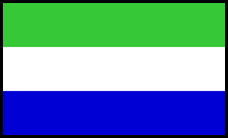Potted Galapagos

|
A Potted Galapagos Islands
Situated in the Pacific some six hundred miles from the South American continent, the nineteen main islands of the Galápagos and the surrounding marine reserve have been called a unique 'living museum and showcase of evolution'. Located at the confluence of three ocean currents, the Galápagos are a 'melting pot' of marine species. Ongoing seismic and volcanic activity reflect the processes that formed the islands. These processes, together with the extreme isolation of the islands, led to the development of unusual animal life such as the land iguana, the giant tortoise and the many species of finch that inspired Charles Darwin's theory of evolution following his visit in 1835.
The site is situated on the Galápagos Submarine Platform, and consists of about one hundred and twenty islands. The larger islands are Isabela, Santa Cruz, Fernandina, Santiago and San Cristobal. The islands were formed by volcanic processes and most represent the summit of a volcano, some of which rise over ten thousand feet from the Pacific floor. The western part of the archipelago experiences intense volcanic and seismic activity. The larger islands typically comprise one or more gently sloping shield volcano, culminating in collapsed craters or calderas. Long stretches of shoreline are only slightly eroded, but in many places faulting and marine erosion have produced steep cliffs and lava, coral or shell sand beaches. Other noteworthy landscape features include crater lakes, fumaroles, lava tubes, sulphur fields and a great variety of lava and other ejects such as pumice, ash and tuff.
The marine environments are highly varied and are associated with water temperature regimes reflecting differences in nutrient and light levels. These range from warm temperate conditions brought on by vigorous upwelling (Equatorial Undercurrent) and a moderately cool, warm temperate-subtropical influence (Peru Flow).
There is considerable variation in altitude, area and orientation between the islands which when combined with their physical separation, has contributed towards the species diversity and endemism on particular islands. Coastal vegetation occurs along beaches, salt-water lagoons and low, broken, boulder-strewn shores. Protected coves and lagoons are dominated by mangrove swamps. The arid zone is found immediately inland from the coastal zone, and is the most widespread formation in the islands. The humid zone emerges above the arid zone through a transition belt in which elements of the two are combined. It is a very damp zone maintained in the dry season by thick, garua fogs which accumulate through most of the night and last well into each day. A fern-grass-sedge zone covers the summit areas of the larger islands where moisture is retained in temporary pools.
The endemic fauna includes invertebrate, reptile and bird species. There are a few indigenous mammals. All the reptiles, except for two marine tortoises, are endemic. These include the Galápagos giant tortoise, with eleven subspecies on different islands, all of which are endangered, terrestrial iguanas, marine iguana, three racer species, numerous lizards of the genus and geckos. The native avifauna includes fifty seven residents, of which twenty six (forty six per cent) are endemic and thirty one are regular migrants. Endemic taxa include thirteen species of Darwin's finches, including Floreana tree finch and mangrove finch. Other noteworthy species include dark-rumped petrel, Galápagos flightless cormorant, Galápagos penguin, lava gull, Floreana mockingbird, Galápagos hawk, lava heron, nocturnal swallow-tailed gull, Galápagos rail, thick-billed flycatcher, Galápagos martin and Galápagos dove. The native mammalian fauna includes six species: Galápagos fur seal, Galápagos sea lion (Lenny), two species of rice rat, bat and hoary bat. Marine fauna includes several species of sharks, rays and Cetaceans. Green turtle and hawksbill turtle are common in surrounding waters, with the former nesting on sandy beaches.
We are pleased to say these precious islands have no chain hotels, no fast food restaurants, no roll-on roll-off ferries and very little in the way of what even a small city accepts as the ‘norm’. This would have been a very different story had any cash rich find occurred. Thankfully there are no gems or gold nuggets to be found and there is no oil or anything worth investigating. Everything that is for sale on the islands has to come in on small freighters and manhandled onto tiny barges. There are no deep water terminals so the cruise ships we have seen are tiny compared to what we have seen pulling in to the likes of St Thomas, Nassau or Florida. We hope this remains the case for at least our grandchildrens childrens lives and it is our wish that they get the chance to visit these incredible islands.
ALL IN ALL THE MOST SPECIAL PLACE TO VISIT ON THE PLANET UNIQUE WITH FRIENDLY FAUNA AND FLORA
.
.
. |
